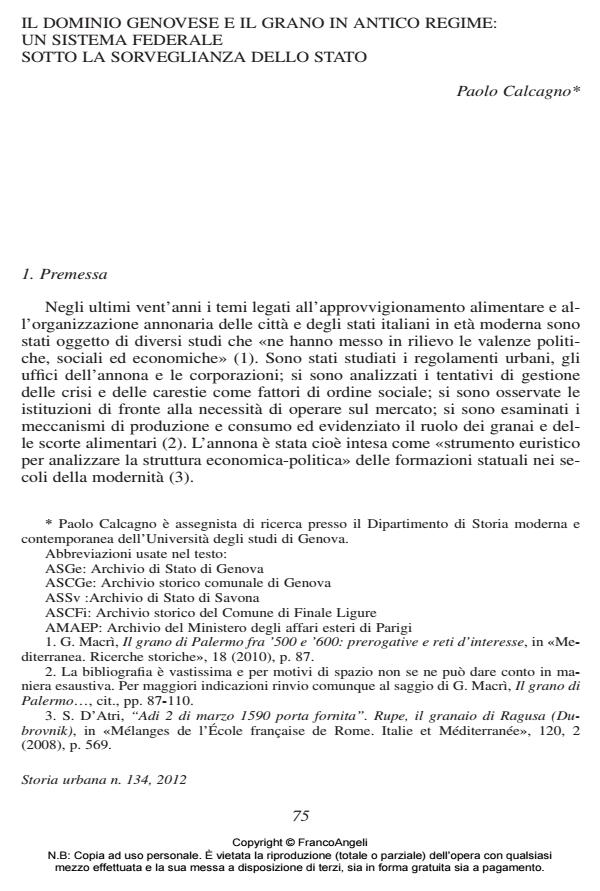The Genoese Dominion and grain in ancien régime: a federal system under State supervision
Journal title STORIA URBANA
Author/s Paolo Calcagno
Publishing Year 2012 Issue 2012/134
Language Italian Pages 20 P. 75-94 File size 2106 KB
DOI 10.3280/SU2012-134005
DOI is like a bar code for intellectual property: to have more infomation
click here
Below, you can see the article first page
If you want to buy this article in PDF format, you can do it, following the instructions to buy download credits

FrancoAngeli is member of Publishers International Linking Association, Inc (PILA), a not-for-profit association which run the CrossRef service enabling links to and from online scholarly content.
Genoa, 16th-18th century Dominion Grain, supplies, magistrates, communities The gnashing among the austere food rationing organization of Genoa and its Dominion and the extraordinary trade adventure in the western Mediterranean of the merchants of the «Superba» has profoundly influenced the genoese historiography, who dealt with the problem in an ideological and instrumental way, reworking uncritically the judgment of the system passed by Authors of physiocratic education. In fact we know practically nothing about the working of the Food Administration Board in the town (and about local offices in the communities of Dominion), the supply of the Rivieras, and the relation that to this end is created between the centre and periphery. On the basis of the documents of the Food Administration Board of Genoa - preserved in the Historical Archives of the City - and through analysis of a particular case study (the one of Savona), this essay attempts to offer some thoughts and possible interpretations, in order to assess the functionality of the Food Rationing Institutions and to observe the degree of economic, political and administrative integration in the context of the State of Genoa.
Paolo Calcagno, Il dominio genovese e il grano in Antico regime: un sistema federale sotto la sorveglianza dello stato in "STORIA URBANA " 134/2012, pp 75-94, DOI: 10.3280/SU2012-134005